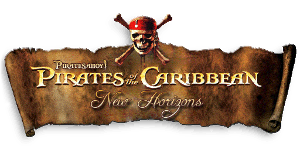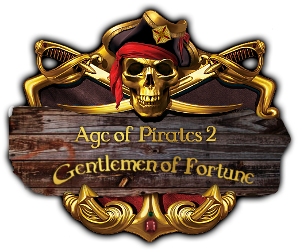The mod IS not really ready for total playing...it is only for Beta Test i think <img src="http://www.piratesahoy.com/forum/style_emoticons/<#EMO_DIR#>/unsure.gif" style="vertical-align:middle" emoid=":?" border="0" alt="unsure.gif" /> ... <img src="http://www.piratesahoy.com/forum/style_emoticons/<#EMO_DIR#>/bookish.gif" style="vertical-align:middle" emoid=":mm" border="0" alt="bookish.gif" />
-


Visit our website www.piratehorizons.com to quickly find download links for the newest versions of our New Horizons mods Beyond New Horizons and Maelstrom New Horizons!-

Quick links for Beyond New Horizons
- Download latest version
- Wiki - FAQ - Report bugs here - Bug Tracker on Github -

Quick links for Maelstrom
- Download the latest version of Maelstrom
- Download the latest version of ERAS II - Download the latest version of New Horizons on Maelstrom
-

Quick links for PotC: New Horizons
- Download latest version
- Wiki - FAQ - Report bugs here
-

Thanks to YOUR votes, GOG.com now sells:
- Sea Dogs - Sea Dogs: Caribbean Tales
- Sea Dogs: City of Abandoned Ships
Vote now to add Pirates of the Caribbean to the list! -

Quick links for AoP2: Gentlemen of Fortune 2
- Downloads and info
- ModDB Profile
- Forums Archive -

A Pirate Podcast with Interviews
Music, Comedy and all things Pirate!
- Episode Guide - About - Subscribe -
- Twitter - Facebook - iTunes - Android -
- Youtube - Fill the Coffers -
You are using an out of date browser. It may not display this or other websites correctly.
You should upgrade or use an alternative browser.A&M map & islands in build 12
- Thread starter Screwface
- Start date
I sure would like to see a new island location for pirates - so I can use my Armand and Estrella characters there... Estrella to run the inn, and perhaps Armand as the "pirate chief"... ??? Maybe with renegade French military? He could send you out on quests too. I was hoping to do this to tie in with the end of the Fred Bob quest - the letter at QC will detail a "secret cove" or secret harbor that you can't get to unless you know the way... Perhaps with a compass that does not point north??? <img src="http://www.piratesahoy.com/forum/style_emoticons/<#EMO_DIR#>/icon_wink.gif" style="vertical-align:middle" emoid=" " border="0" alt="icon_wink.gif" /> <img src="http://www.piratesahoy.com/forum/style_emoticons/<#EMO_DIR#>/laugh.gif" style="vertical-align:middle" emoid="
" border="0" alt="icon_wink.gif" /> <img src="http://www.piratesahoy.com/forum/style_emoticons/<#EMO_DIR#>/laugh.gif" style="vertical-align:middle" emoid=" :" border="0" alt="laugh.gif" /> <img src="http://www.piratesahoy.com/forum/style_emoticons/<#EMO_DIR#>/onya.gif" style="vertical-align:middle" emoid="
:" border="0" alt="laugh.gif" /> <img src="http://www.piratesahoy.com/forum/style_emoticons/<#EMO_DIR#>/onya.gif" style="vertical-align:middle" emoid=" " border="0" alt="onya.gif" />
" border="0" alt="onya.gif" />
<img src="http://www.piratesahoy.com/forum/style_emoticons/<#EMO_DIR#>/william.gif" style="vertical-align:middle" emoid=":will" border="0" alt="william.gif" /> I wish I had more time to explore this stuff!!!!!!!!!!!!!! <img src="http://www.piratesahoy.com/forum/style_emoticons/<#EMO_DIR#>/william.gif" style="vertical-align:middle" emoid=":will" border="0" alt="william.gif" />v_Grimmelshausen
Landlubber
<!--`QuoteBegin-Screwface`+--><div class='quotetop'>QUOTE(Screwface)</div><div class='quotemain'><!--QuoteEBegin--><!--`QuoteBegin-v_Grimmelshausen`+--><div class='quotetop'>QUOTE(v_Grimmelshausen)</div><div class='quotemain'><!--QuoteEBegin-->
Wasn´t St. Martin a Dutch colony? And are these all islands, or are the other ones, like St Eustatius, St Kitts, Eleuthera and Nevis there too?[/quote]
St Martin was divised in two colony. The half north was a french colony and the half south was a Dutch colony.
Yes these are all islands. St eustatius, st kitts, Eleuthera and Nevis are not present except if we would rename QuebradasCostillas in one of them <img src="http://www.piratesahoy.com/forum/style_emoticons/<#EMO_DIR#>/laugh.gif" style="vertical-align:middle" emoid=" :" border="0" alt="laugh.gif" />[/quote]
:" border="0" alt="laugh.gif" />[/quote]
If those mentionen above are all included, then I wonder, where are the Dutch <img src="http://www.piratesahoy.com/forum/style_emoticons/<#EMO_DIR#>/unsure.gif" style="vertical-align:middle" emoid=":?" border="0" alt="unsure.gif" /> Not that I´m myself the biggest fan of them, but, well, they´ve got to be there.That can be done by cloning the location, ive played the `add-on` in russian(even i dont understand the language)...the towns are great <img src="http://www.piratesahoy.com/forum/style_emoticons/<#EMO_DIR#>/onya.gif" style="vertical-align:middle" emoid=" " border="0" alt="onya.gif" /><!--`QuoteBegin-v_Grimmelshausen`+--><div class='quotetop'>QUOTE(v_Grimmelshausen)</div><div class='quotemain'><!--QuoteEBegin-->If those mentionen above are all included, then I wonder, where are the Dutch :? Not that I´m myself the biggest fan of them, but, well, they´ve got to be there.[/quote]HEY! What's wrong with the Dutch? <img src="http://www.piratesahoy.com/forum/style_emoticons/<#EMO_DIR#>/diomed.gif" style="vertical-align:middle" emoid=":dio" border="0" alt="diomed.gif" />indeed <img src="http://www.piratesahoy.com/forum/style_emoticons/<#EMO_DIR#>/huhh.gif" style="vertical-align:middle" emoid="
" border="0" alt="onya.gif" /><!--`QuoteBegin-v_Grimmelshausen`+--><div class='quotetop'>QUOTE(v_Grimmelshausen)</div><div class='quotemain'><!--QuoteEBegin-->If those mentionen above are all included, then I wonder, where are the Dutch :? Not that I´m myself the biggest fan of them, but, well, they´ve got to be there.[/quote]HEY! What's wrong with the Dutch? <img src="http://www.piratesahoy.com/forum/style_emoticons/<#EMO_DIR#>/diomed.gif" style="vertical-align:middle" emoid=":dio" border="0" alt="diomed.gif" />indeed <img src="http://www.piratesahoy.com/forum/style_emoticons/<#EMO_DIR#>/huhh.gif" style="vertical-align:middle" emoid=" k" border="0" alt="huhh.gif" /> ??!Grimm, you old mof ! <img src="http://www.piratesahoy.com/forum/style_emoticons/<#EMO_DIR#>/icon_mrgreen1.gif" style="vertical-align:middle" emoid="
k" border="0" alt="huhh.gif" /> ??!Grimm, you old mof ! <img src="http://www.piratesahoy.com/forum/style_emoticons/<#EMO_DIR#>/icon_mrgreen1.gif" style="vertical-align:middle" emoid=" " border="0" alt="icon_mrgreen1.gif" />
" border="0" alt="icon_mrgreen1.gif" />
(To make it clear where I stand: I am German and my wife is half Dutch/German, combining the best features of both beautiful countries <img src="http://www.piratesahoy.com/forum/style_emoticons/<#EMO_DIR#>/flower.gif" style="vertical-align:middle" emoid=":ty" border="0" alt="flower.gif" /> )v_Grimmelshausen
Landlubber
Nothings _wrong_ with them, of course (well, except they´ve got this peculiar `smog-caused`-`by-grass` problem <img src="http://www.piratesahoy.com/forum/style_emoticons/<#EMO_DIR#>/icon_wink.gif" style="vertical-align:middle" emoid=" " border="0" alt="icon_wink.gif" /> ), I meant, I generally don´t play as a Dutchman. No offense was intended!LOL! You sure didn't offend me. I was playing alond with the joke. <img src="http://www.piratesahoy.com/forum/style_emoticons/<#EMO_DIR#>/icon_mrgreen1.gif" style="vertical-align:middle" emoid="
" border="0" alt="icon_wink.gif" /> ), I meant, I generally don´t play as a Dutchman. No offense was intended!LOL! You sure didn't offend me. I was playing alond with the joke. <img src="http://www.piratesahoy.com/forum/style_emoticons/<#EMO_DIR#>/icon_mrgreen1.gif" style="vertical-align:middle" emoid=" " border="0" alt="icon_mrgreen1.gif" />
" border="0" alt="icon_mrgreen1.gif" />
`Smog-caused`-`by-grass`??????????????? <img src="http://www.piratesahoy.com/forum/style_emoticons/<#EMO_DIR#>/icon_eek.gif" style="vertical-align:middle" emoid=" :" border="0" alt="icon_eek.gif" />The Dutch in the game have the coolest military uniform, I think - no leg encumberance with the "armored skirt" that the Spanish and Portuguese armor has... <img src="http://www.piratesahoy.com/forum/style_emoticons/<#EMO_DIR#>/icon_mrgreen1.gif" style="vertical-align:middle" emoid="
:" border="0" alt="icon_eek.gif" />The Dutch in the game have the coolest military uniform, I think - no leg encumberance with the "armored skirt" that the Spanish and Portuguese armor has... <img src="http://www.piratesahoy.com/forum/style_emoticons/<#EMO_DIR#>/icon_mrgreen1.gif" style="vertical-align:middle" emoid=" " border="0" alt="icon_mrgreen1.gif" /> Love the beret, tho I am unsure that's historically correct, heh!
" border="0" alt="icon_mrgreen1.gif" /> Love the beret, tho I am unsure that's historically correct, heh!
That said, I usually raise the Portuguese flag when I make the English angry at me during the main quest... I like the Portuguese governor. <img src="http://www.piratesahoy.com/forum/style_emoticons/<#EMO_DIR#>/love.gif" style="vertical-align:middle" emoid=":luv" border="0" alt="love.gif" /> <img src="http://www.piratesahoy.com/forum/style_emoticons/<#EMO_DIR#>/rolleyes.gif" style="vertical-align:middle" emoid=" " border="0" alt="rolleyes.gif" /> <img src="http://www.piratesahoy.com/forum/style_emoticons/<#EMO_DIR#>/laugh.gif" style="vertical-align:middle" emoid="
" border="0" alt="rolleyes.gif" /> <img src="http://www.piratesahoy.com/forum/style_emoticons/<#EMO_DIR#>/laugh.gif" style="vertical-align:middle" emoid=" :" border="0" alt="laugh.gif" />
:" border="0" alt="laugh.gif" />v_Grimmelshausen
Landlubber
As a matter of fact, the "uniform" would not so much depend on the country, but on the arms branch the soldier fought in. Pikemen would wear something similar to the Spanish or Portugese style, while musketeers would wear something like the French soldiers. Up to about the 1650s a soldier had to provide his own equipment, so, they certainly were no "GI"´s (those who know where the term GI originated from know what I mean)NathanKell
...
My recollection is that they pretty much just threw in some new islands and picked Caribbean names for them, not so much trying to recreate the actual Caribbean.
I've half a mind to suggest using `POTC-like` fake names for them, lest we get our hopes up. <img src="http://www.piratesahoy.com/forum/style_emoticons/<#EMO_DIR#>/unsure.gif" style="vertical-align:middle" emoid=":?" border="0" alt="unsure.gif" />
I don't think adding locations needs anything to do with DLLs; the one sticky point was adding files to the foam folder for shore locations, IIRC.Yes Nathan, I understood the principle of functioning of the files in the foam folder with shore locations. <img src="http://www.piratesahoy.com/forum/style_emoticons/<#EMO_DIR#>/bookish.gif" style="vertical-align:middle" emoid=":mm" border="0" alt="bookish.gif" />
At the moment, I'm working to create jungle locations on hispaniola by using "location cloning". <img src="http://www.piratesahoy.com/forum/style_emoticons/<#EMO_DIR#>/onya.gif" style="vertical-align:middle" emoid=" " border="0" alt="onya.gif" />
" border="0" alt="onya.gif" />NathanKell
...
Hey, great!
You know...this would be a perfect time to make a prototype `auto-jungle`-maker that stitches existing locations together...
Maybe best to do it outside of POTC though. Write a little app to start at town exit and stitch together any other endpoint (other town, or shore(s) ) with varying jungle locs, and use a smattering of cave or house `cul-de`-sacs.Yes, that would be the perfect time to add my random location generator... if I HAD time to make it. (A familiar story, isn't it <img src="http://www.piratesahoy.com/forum/style_emoticons/<#EMO_DIR#>/rolleyes.gif" style="vertical-align:middle" emoid=" " border="0" alt="rolleyes.gif" /> )
" border="0" alt="rolleyes.gif" /> )
Don't get me wrong, I don't want to claim that idea for me. On the contrary, I have so much real and modwork on my plate that I'd be happy if somone would take a spoon off. What I want to avoid is doublework. So the best i can do at the moment is to write down my concept, and if someone turns my ideas into a working mod before I can do it I'll be happy with that.
And Screwface, great that you can make landing points <img src="http://www.piratesahoy.com/forum/style_emoticons/<#EMO_DIR#>/onya.gif" style="vertical-align:middle" emoid=" " border="0" alt="onya.gif" /> That was the missing link for gameworld enlargement so far.
" border="0" alt="onya.gif" /> That was the missing link for gameworld enlargement so far.NathanKell
...
CCC: I meant it in that light, though I wasn't clear. <img src="http://www.piratesahoy.com/forum/style_emoticons/<#EMO_DIR#>/icon_wink.gif" style="vertical-align:middle" emoid=" " border="0" alt="icon_wink.gif" />
" border="0" alt="icon_wink.gif" />
I'm in rather the same boat. <img src="http://www.piratesahoy.com/forum/style_emoticons/<#EMO_DIR#>/icon_mrgreen1.gif" style="vertical-align:middle" emoid=" " border="0" alt="icon_mrgreen1.gif" />
" border="0" alt="icon_mrgreen1.gif" />
Screwface: Ever played Daggerfall?
The idea is that, rather than creating everything by hand (towns, island interiors, whatever), we create some basic `cookie-cutter` pieces. In POTC that's simple because the pieces already exist (i.e. all the jungle locations).
Then we use a program to randomly stitch together (some of) the pieces, and that's the new layout.
Daggerfall did this with towns, with dungeons, etc.
I.e. we pass the function the endpoints: town exit(s), and shore(s).
It then figures out how to connect them using existing jungle pieces.
It perhaps adds a few interior end pieces as well (i.e. Oxbay Cave) which have only 1 entrance/exit.
So in the end you (might) have (where X is exit; note that there are multiple pieces with identical exit numbers so we pick a random one once we've randomly determined what type...)
<!--c1--><div class='codetop'>CODE</div><div class='codemain'><!--ec1--> Jungle_2X--Shore1_1X
Jungle_3X -<
/ Jungle_2X--Jungle_2X
town_exit_3X -< |
/
Jungle_2X--Jungle_3X--< Jungle_1X
Jungle_3X--<
Shore2_1X<!--c2--></div><!--ec2-->
Note that 1X does not mean 1 entrance 1 exit, it means can only go back the way you came (2X is 1 at each end). 3X is the fork.This "`cookie-cutter`" idea - could it work like Inez's Tool with the furniture and other items?NathanKell
...
I can't speak practically (re doing that coding in the tool). But theoretically yes.
Or better yet, do as Alan says: export the room bare, with locators, and then ingame select furniture models to place at the locators. Slower at runtime, but you need only one copy of the location model.<img src="http://www.piratesahoy.com/forum/style_emoticons/<#EMO_DIR#>/no.gif" style="vertical-align:middle" emoid=" " border="0" alt="no.gif" /> <img src="http://www.piratesahoy.com/forum/style_emoticons/<#EMO_DIR#>/mybad.gif" style="vertical-align:middle" emoid="
" border="0" alt="no.gif" /> <img src="http://www.piratesahoy.com/forum/style_emoticons/<#EMO_DIR#>/mybad.gif" style="vertical-align:middle" emoid=" " border="0" alt="mybad.gif" /> I need to learn to communicate better! <img src="http://www.piratesahoy.com/forum/style_emoticons/<#EMO_DIR#>/rolleyes.gif" style="vertical-align:middle" emoid="
" border="0" alt="mybad.gif" /> I need to learn to communicate better! <img src="http://www.piratesahoy.com/forum/style_emoticons/<#EMO_DIR#>/rolleyes.gif" style="vertical-align:middle" emoid=" " border="0" alt="rolleyes.gif" /> I meant, Inez's Tool can help you place items in a room - cookiecutter style. Is it really possible to do something like this with building ISLANDS like you propose?
" border="0" alt="rolleyes.gif" /> I meant, Inez's Tool can help you place items in a room - cookiecutter style. Is it really possible to do something like this with building ISLANDS like you propose?






